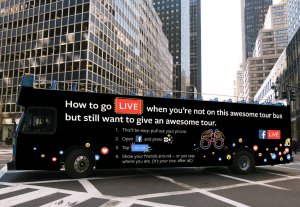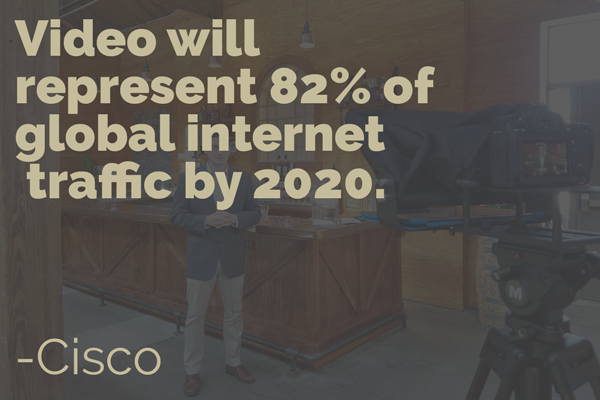In a recent post, we talked about creating video for a mobile world. The topic of making the case for more video, or more rich media content in general, falls in the same neighborhood, if not the same house as that post. Having a broad grasp of the digital media landscape and the way content is consumed is key to creating relevant content.
One of the biggest challenges for lots of marketers is the very first step – convincing the bosses upstairs that video is important. Producing high-quality content can be expensive, so a discussion around pursuing it can be tough to have without the right evidence. That’s why you need all the ammo you can get when you’re making the case for more video.
Video is the Internet – The Internet is Video
Every year it becomes more clear that video is the chosen path of consumers when consuming digital content. In fact, a recent report from Cisco indicates that by 2020, 82% of all consumer internet traffic will be video. Put another way, nearly a million minutes of video content will cross the network every second by 2020.
Think about that! 82% of everything that happens online just three years from now is going to be video. And all of the reasons why make sense. Creating and watching video online has never been easier than it is now.
Widespread 4G combined with WiFi nearly everywhere has made streaming media simple. Beyond that, just about every single person has an HD camera in their pocket. On a professional level, more companies are looking to produce high-quality content for marketing every day.
If you don’t start creating video today – realistically, if you haven’t already started – you’re at a big disadvantage. Put simply, if your company isn’t creating video, you’re going to get left behind.
Video Creates Connections
Video isn’t just the all-encompassing beast taking over the internet; it’s also a better way to communicate. The concept of making a connection with your audience is a crucial part of making the case for more video. By just about every measurable metric, research shows that consumers would rather interact with video than with more traditional media.
One study from Animoto reveals that four times as many consumers would rather watch a video about a product than read about it. Just as important, 25% of people completely lose interest in a company if it doesn’t have video.
In many ways, this speaks to the earlier point. Video is the norm now, and your audience expects video. By all accounts, the majority of people are used to watching video about anything and everything. If they don’t see it, they assume something is off. This isn’t to say that your written content is useless – it’s simply important to remember just how crucial video is to gaining and keeping your audience’s attention.
On a more personal level, everyone can think about video content that created a connection with them using emotion. The folks over at Vidyard have a full post on how emotional responses to videos can drive action that’s worth your time as well. The bottom line is that visual storytelling can help deliver a message in a way that written communication can sometimes fall short. In turn, this connection can help drive your audience to action.
Video is Critical for Social Media
 It seems like every post we write here comes back to social, more specifically to Facebook, and this post is no different. Facebook is investing an incredible amount of time and energy in video. As the largest social network in the world, it’s important to pay attention to what they say, especially when making the case for more video.
It seems like every post we write here comes back to social, more specifically to Facebook, and this post is no different. Facebook is investing an incredible amount of time and energy in video. As the largest social network in the world, it’s important to pay attention to what they say, especially when making the case for more video.
Last year, during an earnings report, Mark Zuckerberg said “we’re particularly pleased with our progress in video as we move towards a world where video is at the heart of all our services.” Based on this quote, Zuckerberg sees Facebook as a platform moving entirely toward video.
It’s not just words that prove this point. Facebook has made a tremendous monetary investment in live as well, launching a massive traditional advertising campaign to push more users to the platform. Beyond that, they are paying a large number of celebrities to use the live platform. The Wall Street Journal reports that Facebook has contracts with upwards of 100 influencers totalling more than $50 million to use live.
Making the Case for More Video
The bottom line is that video isn’t going anywhere. It dominates internet traffic, and will continue to do so for years. It comprises the primary strategy for the largest social network on the planet. And most importantly, it’s the preferred consumption method for the majority of people.
Video requires budget – this is an unavoidable fact. But when done correctly, you can stretch your spend and really make it worth your while. When you’re ready to make the case for more video, reach out to us – we’ll be happy to help explain to your C-Suite why video is so important!


